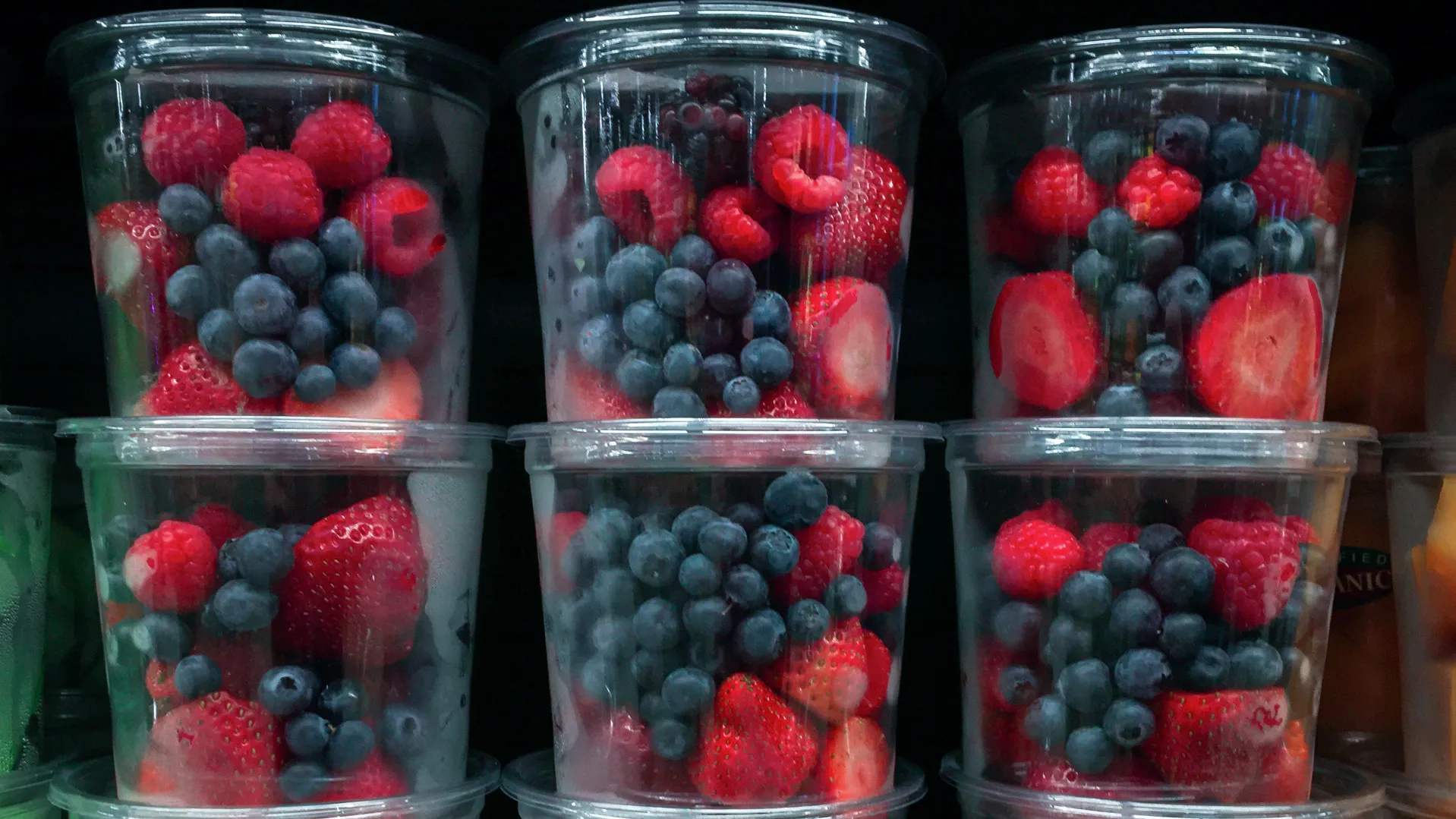Yangmei (Myrica rubra) is a fruit that has been cultivated in China for at least 2000 years, mainly in the Yangtze River region.
It is known in the West by several names that qualify it as a berry: Chinese bayberry, Japanese bayberry, red bayberry, yumberry, waxberry, Chinese strawberry. However, due to the presence of a small, woody seed , it cannot be properly called a berry, which is a fruit with all its layers being watery and soft. But in common usage, all small, round, fleshy fruits are called berries, so Yangmei can fit this description.

Each yangmei fruit is the size of a large cherry and has an irregular exterior made up of many small fleshy stalks that attach to a single hairy seed at its centre. These tiny stalks give it a unique texture that is firm and chewy, but also provide hiding places for small pests and trapped dirt. In China, people typically soak the fruit in salt water before eating it to extract anything unpleasant.

The flavour of yangmei is similar to that of strawberry and raspberry, but slightly harsher and with an herbal taste. Sellers often sell them in different stages of ripeness depending on what the buyer wants. Fruits with a deep, dark red colour are sweeter and should be eaten fresh. The bright red fruits tend to be acidic and are more commonly used in cooking. Yangmei can be dried, candied, baked or used to flavour teas. Bright red yangmei are often infused into baijiu (a clear liquor) to make a fruit-flavoured alcohol that can be sipped or cooked with other foods such as prawns.

Because of thefruit's unfortunate ability to harbour pests, it is almost impossible to find fresh yangmei outside Asia, but packaged products containing the fruit can be found in the United States and Europe. In the early 2000s, juices and powders made from the fruit were marketed under the name 'yumberry' as another contender in the superfruit craze. However, it seems that yumberry has lost the battle against other antioxidant-rich fruits such as pomegranate and açaí. Many websites of several large companies that once marketed yumberry juice are down or no longer have items for sale.
Yangmei is sometimes confusingly sold under the name 'arbutus', which is the scientific name for another fruit,Arbutus unedo, known in Italy by the common name of corbezzolo, a berry of similar appearance. Unlike arbutus, yangmei plants or fruit are unlikely to be found in the United States or Europe. Canned or dried fruits can sometimes be found in Asian supermarkets around the world.
However, to try fresh yangmei, the best thing to do is to visit China during the peak fruit season, from May to July. It is often sold by roadside fruit vendors.
HOW TO CLEAN YANGMEI
The easiest way to clean yangmei is to first wash them with water, then fill a pot with water. Add 1 teaspoon/5g of salt per 2 cups/500 ml of water. (You can also replace the salt with baking soda if you prefer). Add the yangmei and let it soak for 20-30 minutes. Stir in one direction every few minutes with chopsticks or a spoon. Drain, wash again with fresh water and dry on a paper towel. Or a towel that you don't mind staining - these juices are like those of a beetroot, so be careful when eating!
The downside of yangmei is that they are extremely perishable and are only available for a short time in early summer - which makes the fresh fruit even more valuable. You'll find yangmei juice, baijiu infused yangmei and dried yangmei available all year round, but for freshness, summer is the right time.

HOW TO EAT YANGMEI
Select berries that are a deep dark brown colour, bordering on purple, because they are best for fresh consumption. It is best to look at them and make sure they are free of defects. Take them home and wash them (see above), and then put them in your mouth. Watch out for small stones!

YANGMEI IN ITALY
According to Fruitseeker, Italian nurseryman Francesco Gandini from Guidizzolo has had yangmei plants for about ten years and has a very good production from them, although the fruit is small and the yield varies between seasons.













